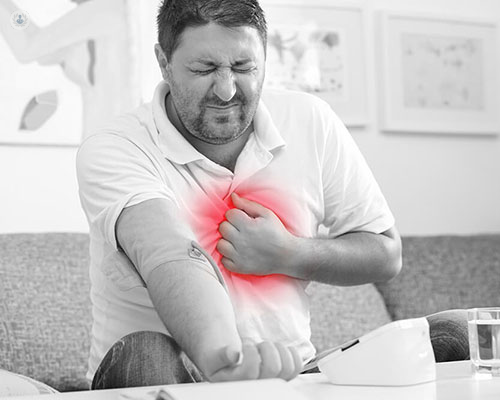Aortopathy: symptoms, treatment, and prevention
Escrito por:Top Doctors recently had the pleasure of interviewing Dr Bejal Pandya, an esteemed consultant cardiologist, to discuss what aortopathy is, what the main associated symptoms are, and how the potentially life-threatening condition can be prevented.

What is aortopathy?
Aortopathy is any disease of one’s aorta. As the heart contracts, blood is forced through the aortic valve, and it ought to be flexible enough as the blood surges through it.
However, when it comes to aortopathy, some of the contractility and flexibility of the aorta is lost, and as a result, the aorta can become distorted, misshapen, narrowed, and it can tear, which can lead to dissection, which carries a high risk of sudden death. Aortopathy, in simpler terms, simply means either a narrowing or an expanding of the aorta.
What are the main symptoms?
Often, aortopathy does not carry with it any symptoms at all, and because of this, people who may be at risk due to genetic factors should get screened regularly. When the aorta grows, people might experience back pain and/or chest pain.
When the aorta tears, this is usually when people will experience excruciating pain that is accompanied by vomiting and sweating. High blood pressure is another common symptom associated with aortopathy. The biggest risk factor is age.
What are the different types of aortopathy?
There are two types of aortopathy: syndromic and non-syndromic. Within syndromic aortopathy, there are certain genetic conditions such as Marfan syndrome that manifest in the cardiovascular and respiratory systems, as well as the eyes.
People with syndromic aortopathy will typically be quite tall and slim, and will often have very long fingers, and will also usually experience spinal curvature and changes in their facial features.
When it comes to people with non-syndromic aortopathy, patients have acquired diseases and conditions as a result of high blood pressure, regular cocaine use, and high cholesterol.
How is aortopathy treated?
Patients with aortopathy will be frequently screened and monitored. Once patients reach a certain threshold, they will be offered surgery wherever suitable in order to help prevent dissection, which is potentially life-threatening.
Up until that point, treatment would typically entail surveillance imaging such as MRI and CT scanning, and echocardiograms. Patients will hereafter be offered the opportunity to replace their aorta. It is essential, at this stage, that patients have a really tight control on their blood pressure.
Can aortopathy be prevented? If yes, how so?
People should avoid certain exercises, such as static exercises like weightlifting. People should also stop smoking, and should make sure that their blood pressure and cholesterol limits are well controlled.
Dr Bejal Pandya is a highly qualified and revered London-based consultant cardiologist. Make sure to book a consultation with her today via her Top Doctors profile if you are worried about any abovementioned symptoms.


